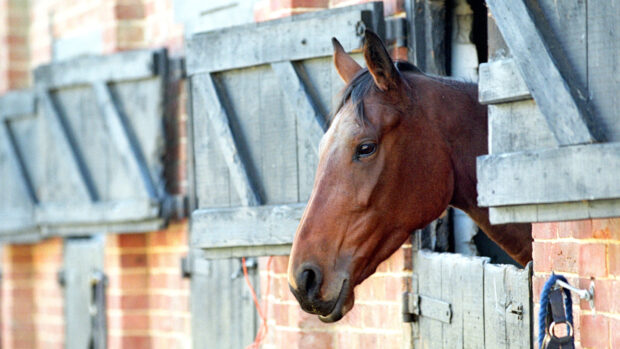Horse & Hound’s simple guide to the most common stable vices displayed by horses and ponies.
- Cribbing: the horse grasps a horizontal surface with its incisor teeth, flexes its neck and pulls back. It is often worse around meal times, since food is a stimulating factor. Apart from damage to the stable or fence, the incisors will erode causing dental disease and muscles under the neck will become over-developed.
- Windsucking: the horse flexes its neck and makes a grunting noise as he takes in air. This is usually a continuation of cribbing, but is sometimes an isolated act. Recent endoscopic studies suggest that air is not swallowed into the stomach, but is held in the gullet, then released, making the term a misnomer.
- Weaving: the horse swings its head and neck from side to side, usually over the stable door, shifting its weight from one limb to the other.
- Box walking: the horse circles compulsively round the box for hours. Do not confuse this with the occasional pacing. If the horse weaves and box walks, it will spend less time eating, causing loss of condition; abnormal stress will be applied to the leg joints, increasing the riskof future lameness; the shoes will wear unevenly.
- Stall kicking: the horse pounds its hind feet against the walls, causing trauma to the hock.
- Self mutilation: particularly in the flank area.
Certain abnormal behaviours, such as wood chewing and biting and lashing out at humans, are termed “displacement” activities – they are not true stereotypes, although they may indicate stress.



